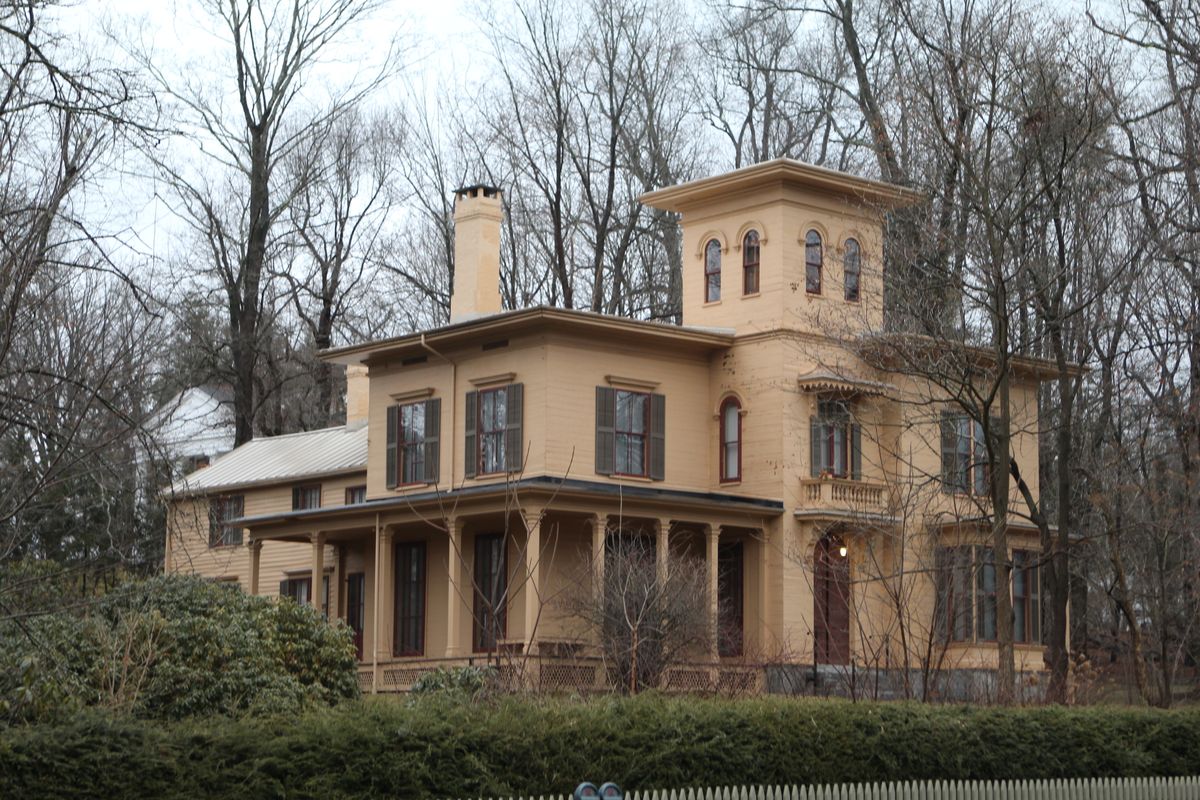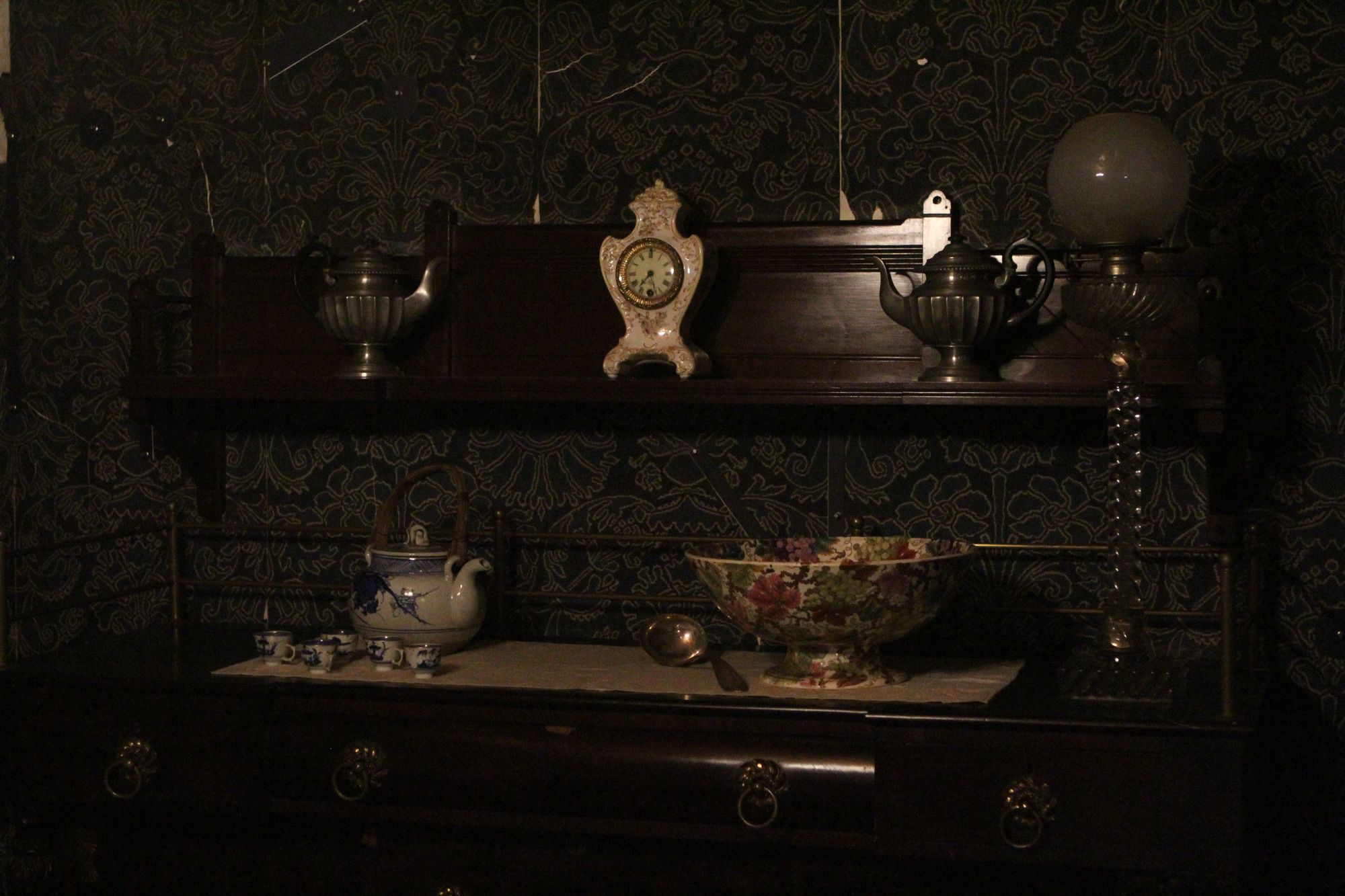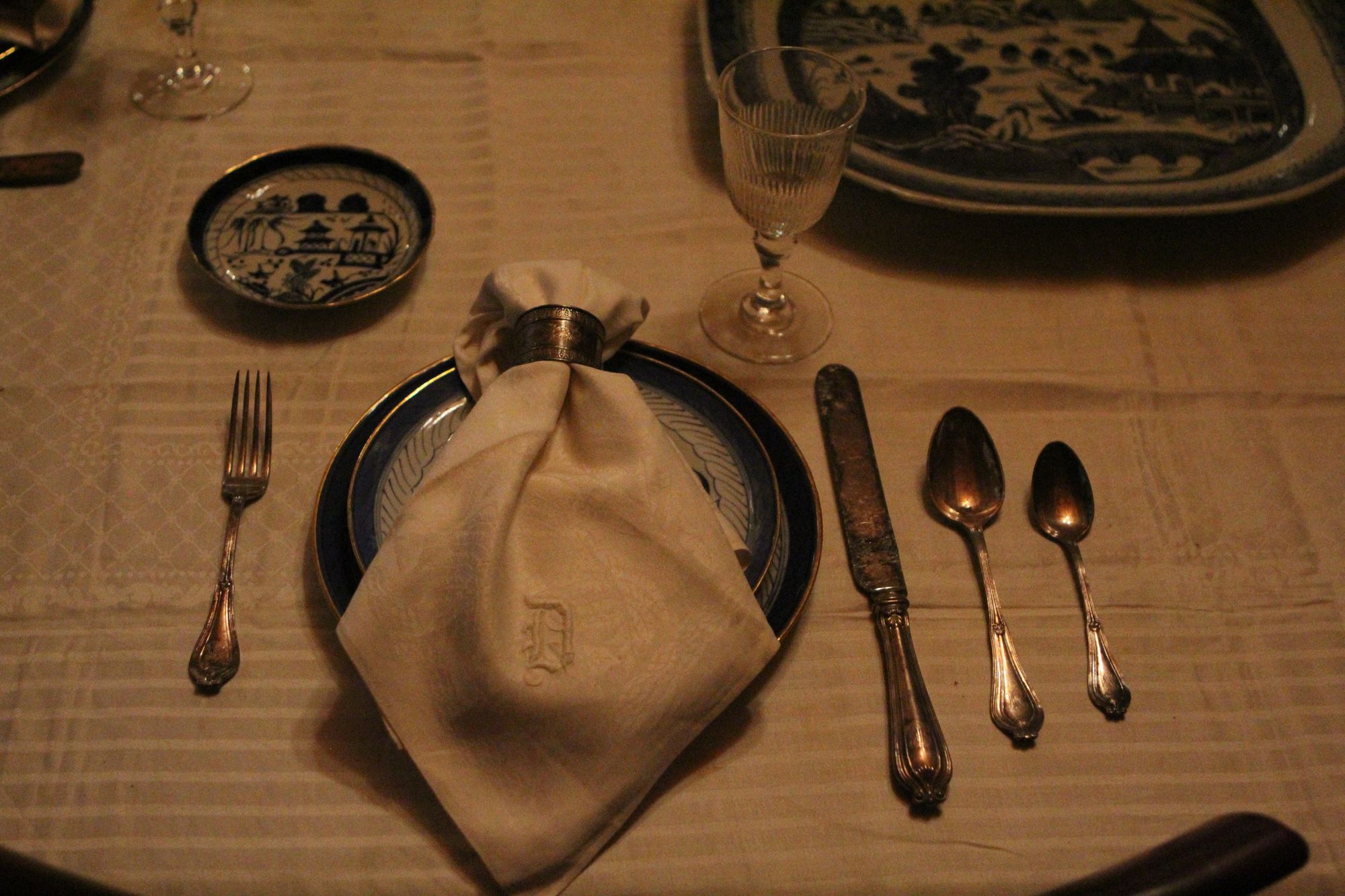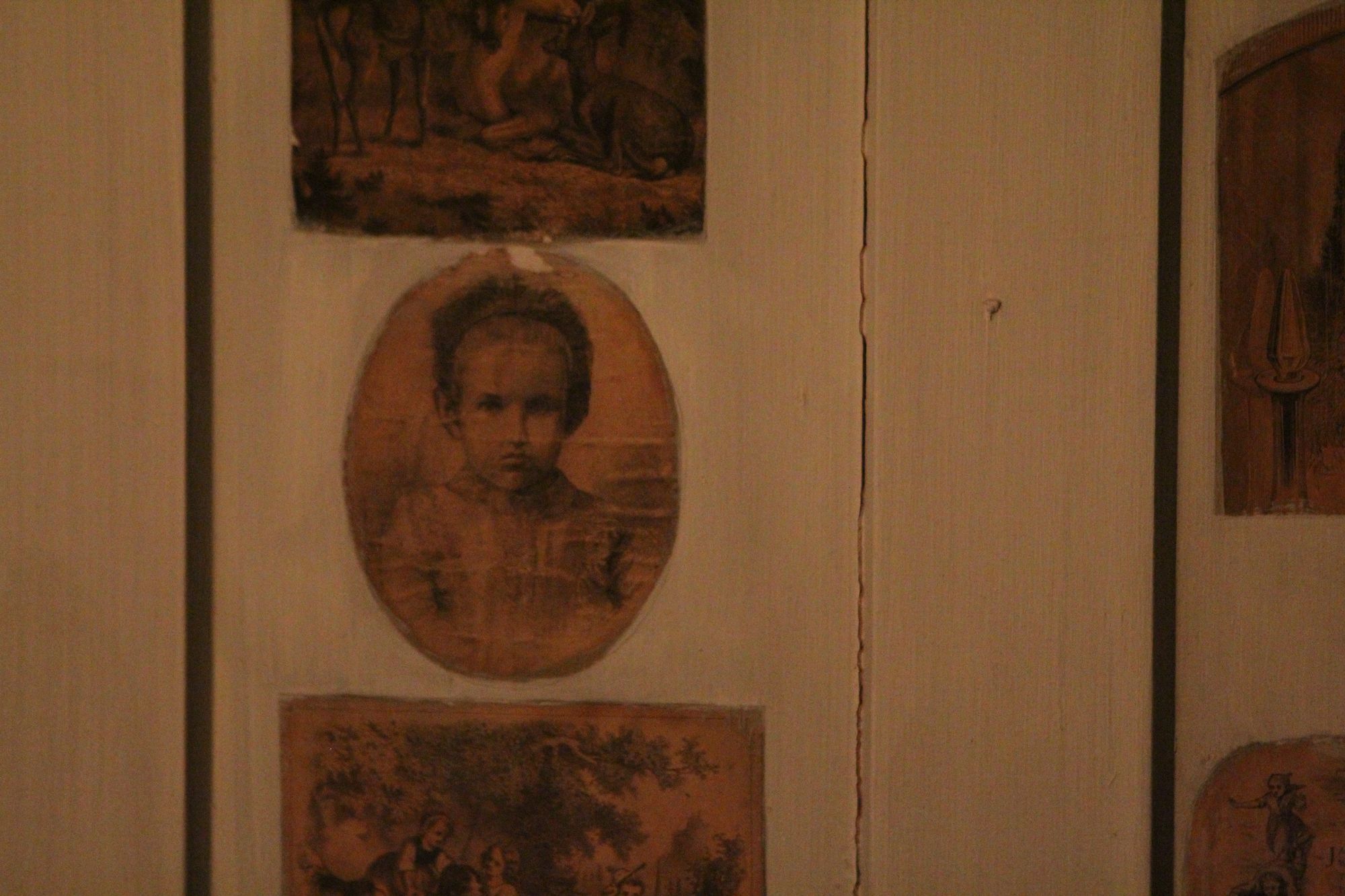The Evergreens: Home and Heart of the Dickinsons
This week, the Emily Dickinson Museum reopened The Evergreens, home to Austin and Sue Dickinson, after an extensive restoration. Chanelle Jaeger ’27 recounts her tour experience and explores the history of the house.

The mysterious burnt orange house that neighbors the iconic home of Emily Dickinson has always caught my attention. It seemed to be the silent sibling to the mellow yellow home where Emily wrote her poems in solitude. When I visited the Homestead during orientation last semester, the alluring orange house was alluded to, but my curiosity was never quite quenched. During a press visit previous to the reopening of the house, I experienced the simultaneous contentment of this curiosity, as well as an awakening of a newfound desire to know more about Emily and her vibrant family.
Context
The Evergreens is the household of Emily Dickinson’s brother, Austin Dickinson, his wife, Sue, and their three children: Ned, Martha, and Gilbert. The house is located west of the Homestead, where Emily Dickinson grew up and wrote her famous poetry. These two homes have formed The Emily Dickinson Museum since 2003.
The Evergreens house has been closed since 2019 due to an ongoing process to restore the home and to increase the preservation quality of the historical building and the valuables that live inside. Unlike the Homestead, which was sold out of the ownership of the Dickinson family in 1916, The Evergreens has been maintained in the family for generations, and only the Dickinson family and their heirs have lived in it. This means that all objects within the house are the original belongings of the Dickinson family.
The Tour
Prior to the opening, photographer Lauren Kelz and I were invited to a tour of The Evergreens. It was a classic rainy Massachusetts afternoon with gray clouds in the sky and muddy ground under our feet as we walked the short path between the Homestead and The Evergreens. We were greeted by cheerful employees of the Emily Dickinson Museum who were going to give us a tour of the home.
When I walked through the front door of the home, the history of the space was palpable; the dim lighting and dark colors of the home contributed to the feeling of walking into a preserved moment in time, like a fly in amber.
Senior Director of Programs Brooke Steinhauser explained that the importance of The Evergreens to Emily Dickinson is that the home “tells the whole story of her life, not just about the daily backdrop of her life, but also about her poetry.”

Why Did The House Close?
Steinhauser explained that the museum’s environmental control efforts caused The Evergreen’s closure. The belongings in the house are original to the family, as well as the foundational aspects of the home, like the wallpaper. It is important to make sure that moisture problems are mitigated, and that temperature and humidity are under the control of the museum, so what visitors continue to see is a home that is “not too different from the way it looked in 2019.” She emphasized that the closure of The Evergreens was “not a project about restoration, but more of a project about preservation.”
Tour guide Emma Kautz explained that the dim lighting in the house is part of the preservation goal. “It is partially due to the shades which are used to protect the collection, and that even though it’s dark the shades are used to keep the objects safe.” She expressed that it is also due to maintaining the original light fixtures in the home.
The Emily Room
Martha Dickinson Bianchi, daughter of Austin and Sue Dickinson and the last resident of The Evergreens, maintained the collection of family belongings, was involved in the publication of Emily Dickinson’s work, and became a bibliographer of the poetry. She would welcome people who were interested in Emily’s work into The Evergreens when they visited Amherst. This was the establishment of the informal first Emily Dickinson Museum.
A new tour guide in training, Melba Jensen, said that she felt that The Evergreens is “the other half of Emily’s story.” The Homestead was the place where she “wrote, had recluse and privacy, and where she could think, but [The Evergreens] was the place of source of play, contact, and the children of the family that she could be involved with.” Emily was involved heavily in the lives of her nieces and nephews.
Jensen took us into the first room in the house that she referred to as “the first Emily Dickinson museum.” This room is called The Emily Room, as this was a key part room for the continued publication of her work. There is a key message that is presented in this room, that there were important women that were involved in continuing the legacy of Emily’s work.
Soon after Emily’s death in 1886, Sue Dickinson locked up 800 poems — found in the Homestead by Emily’s sister Lavinia Dickinson — in a wood box in The Evergreens, where they would remain for the next 30 years. With minimal editing, Bianchi published the collection of approximately 250 of Emily’s poems, letters between her mother and Emily, as well as a memoir about growing up with her Aunt Emily around. Bianchi had no children, so control of The Evergreen estate passed to her literary executor, Alfred Hampson. His daughter, Milicent Todd Bingham, had received the wooden box that held the poems. She worked on Emily’s unpublished poems, biography, and a memoir. She lived in the house until the 1980s, making only necessary changes in order to preserve the home.
The Parlor
In visiting another room in the house called the parlor, Kautz expressed how this room was a key part of Emily’s posthumous publications. She explained that “if it wasn’t for Sue introducing her to people in the parlor, a lot of her publication during her life wouldn’t have happened.” Emily met newspaper editor Samuel Bowles in the parlor, who published five of her poems during her lifetime.
Kautz expressed that The Evergreens “was really full of life, and Emily was a big part of that liveliness.” The Evergreens challenges the narrative that Emily lived her life as an independent recluse by revealing her vibrant social life.
The Dickinson family was a great presence in the town of Amherst. Austin Dickinson was a prominent lawyer and an Amherst College treasurer for 30 years after inheriting the position from his father. His influence led to many prominent speakers at the college, such as Ralph Waldo Emerson, being housed at The Evergreens. Steinhauser explained that because of this, The Evergreens became a “cultural hub of town.”
The Evergreens has other connections to Amherst College. A banjo that is displayed in the parlor room was played by the family as well as the college’s banjo club, and club members’ initials can be seen on the instrument. Emily also socialized and befriended college students through attending lectures and clubs, such as the Shakespeare Club.
The Dining Room
The dining room of The Evergreens is a stunning display of original Dickinson family tableware that was used to entertain and serve guests. Steinheiser emphasized that in taking “one look at this piece of the museum’s collection, it can be seen that service was very important to this family.” For example, under the chair that Sue would sit in, there was a button that she could press with her foot so that the servers were alerted to bring out the next course for the table.

The Nursery
The nursery upstairs in the house was where all three children were raised. The last child that was raised there was Gib, who tragically died from typhoid fever when he was eight. On the doors, clippings of various magazines and newspapers are placed in a scrapbook manner revealing the touch of the children who lived in this room. Kautz said this was notable because Sue, “who kept such a beautiful, immaculate home, allowed her children to paste all over their doors, which showed how she let them be kids.”
Steinhauser said that The Evergreens will be staying open throughout the ongoing restoration process as they “want to be fully transparent about the work that we’re doing,” and that they find that “people that visit often enjoy this look behind the scenes.”

Why Visit The Evergreens?
Bella Lozier ’26 is a big fan of Emily Dickinson whose interest in the poet was sparked by reading Dickinson’s work during her time at Amherst and watching the AppleTV show Dickinson. When she first visited Amherst, she felt excited as it was like she was “meeting a celebrity, and picture Emily’s life at Amherst.”
Lozier plans on visiting The Evergreens, and that she “highly recommends that people go visit the combination of homes that are historic spaces to learn what was important in Emily’s life.”
The Homestead and The Evergreens offer a “powerful connection to where we live.”





Comments ()